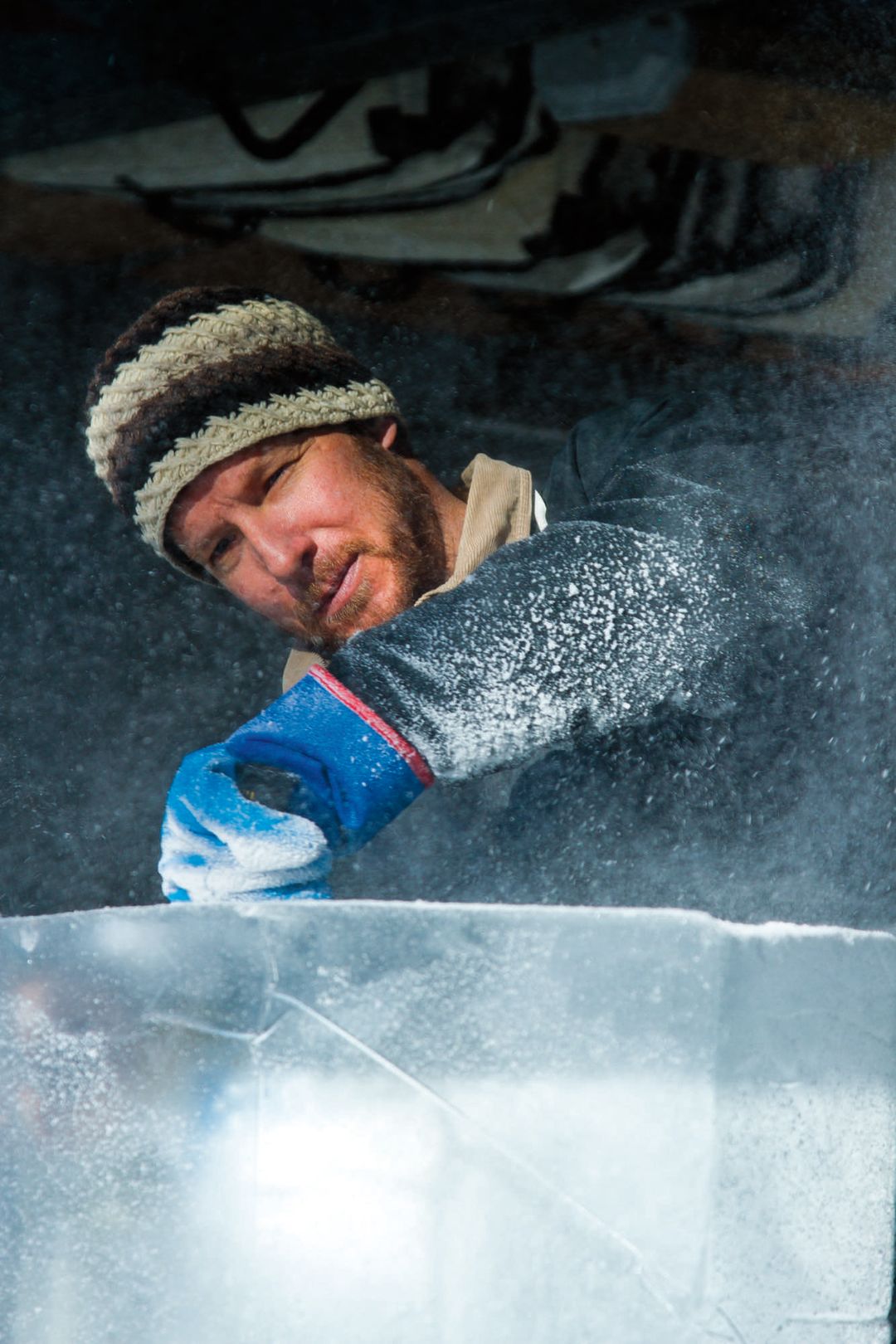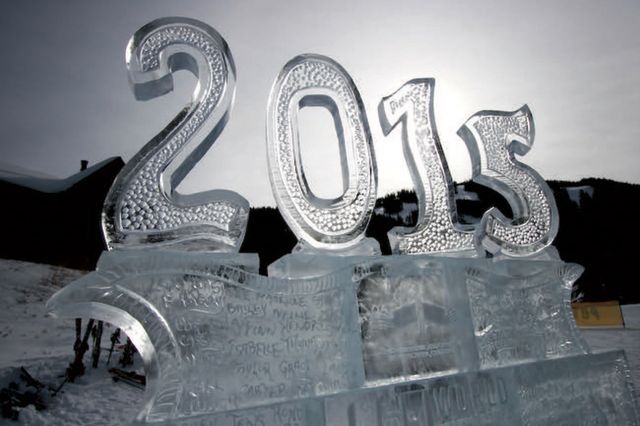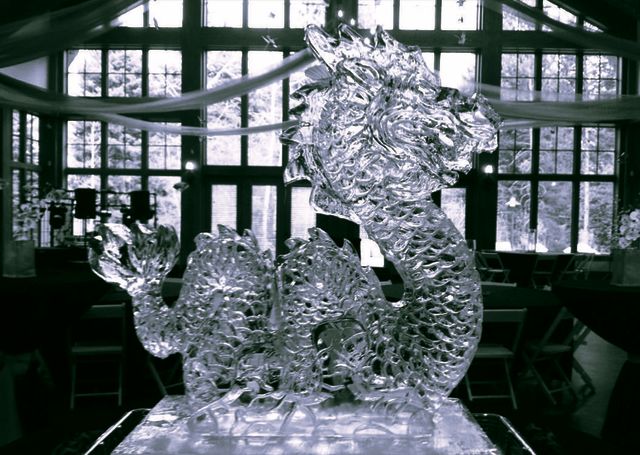The Cold and Creative World of an Ice Sculptor

While most of us seek out as much sun and warmth as we can during the fleeting summers of the high country, Paul Wertin spends way too much time shivering inside a walk-in freezer. His art, and livelihood, depends on it.
At the heart of Alpine Ice, the ice-sculpting business he founded five years ago—quartered in a converted garage at 9,000 feet in Wolcott, which is not exactly warm even in the height of summer—hums the giant commercial freezer where he stores the raw material of his craft: shelf upon shelf of 300-pound frozen crystalline blocks.
Michelangelo quarried Carrara marble. Wertin makes ice cubes with a patented machine called a Clinebell, which circulates water by a pump as it freezes, ensuring that the blocks remain as clear as glass (not frosty white) and forcing air bubbles to float to the top. In the summer, he uses three Clinebells, which yield two blocks every three days. At harvest time, Wertin transfers an ice block onto a dolly and then rolls it out onto the concrete floor of his studio,

which, equipped with handsaws and chainsaws and chisels, might be mistaken for the atelier of a woodworker or the shed of a lumberjack. With his electric Stihl screaming, adjusting the height of the block (which rests on a hydraulic lift) he shaves off the bubble-riddled top of the block, then feverishly saws and shapes for as long as the weather allows (typically ninety minutes). The process generates a blizzard of shavings, which he uses to fill in sculpting crevices with wintry tones before rolling the tooled, dripping block back into the freezer to cure.
“There’s definitely a lot of heavy lifting involved,” Wertin says, adding that even in the summer, it’s necessary to wear insulated gloves, waterproof boots, a rain shell, and a butcher’s apron. “Otherwise you get soaked—and that’s not comfortable.”
In the winter, when Wertin is contracted to produce massive sculptures for public display at Vail and Beaver Creek, he stacks blocks along the shady side of his house. This obviously is not an option in the summer, when, paradoxically, his business booms. Hence, the massive freezer. And the Clinebells, churning out block after block to be shaped into ice bars for golf events, serving bowls for raw seafood at private parties, and special orders for outdoor weddings.

Each of Wertin’s custom pieces begins with a pencil drawing that he shares with clients as uses as a template when roughing out the initial shapes. For a standard centerpiece animal or heart, one 300-pound block does the trick. When a template requires him to use more blocks, he fuses the pieces together with water. His most involved project to date was last winter’s Arches exhibit on the banks of Gore Creek in Vail Village, an undulating wall and pillars of illuminated ice that required 115 blocks in all.
This summer, Wertin’s commissions include a frozen roller coaster—requested by the father of a bride to commemorate an amusement park ride she loved as a child. Another couple has ordered a frozen rendition of Cam the Ram, mascot of their alma mater, Colorado State University.
“I enjoy it because you get to be creative,” Wertin says. “Not all the time—a lot is commercial art, like a vodka company wanting their logo in the piece. But even within that you can find some cool design elements, and I like doing something from start to finish. You get the satisfaction of seeing that finished product.” Even if, especially in the heat of summer, the work doesn’t last long. “Most of what I do is just for one night, for one event,” Wertin explains. “In the wintertime, I get to do some cool projects that last a long time outdoors. Yeah, it goes away, but that’s part of the draw. It’s temporary, so you have to appreciate it while it’s there.
“Plus, when it melts, people want another one.”






































